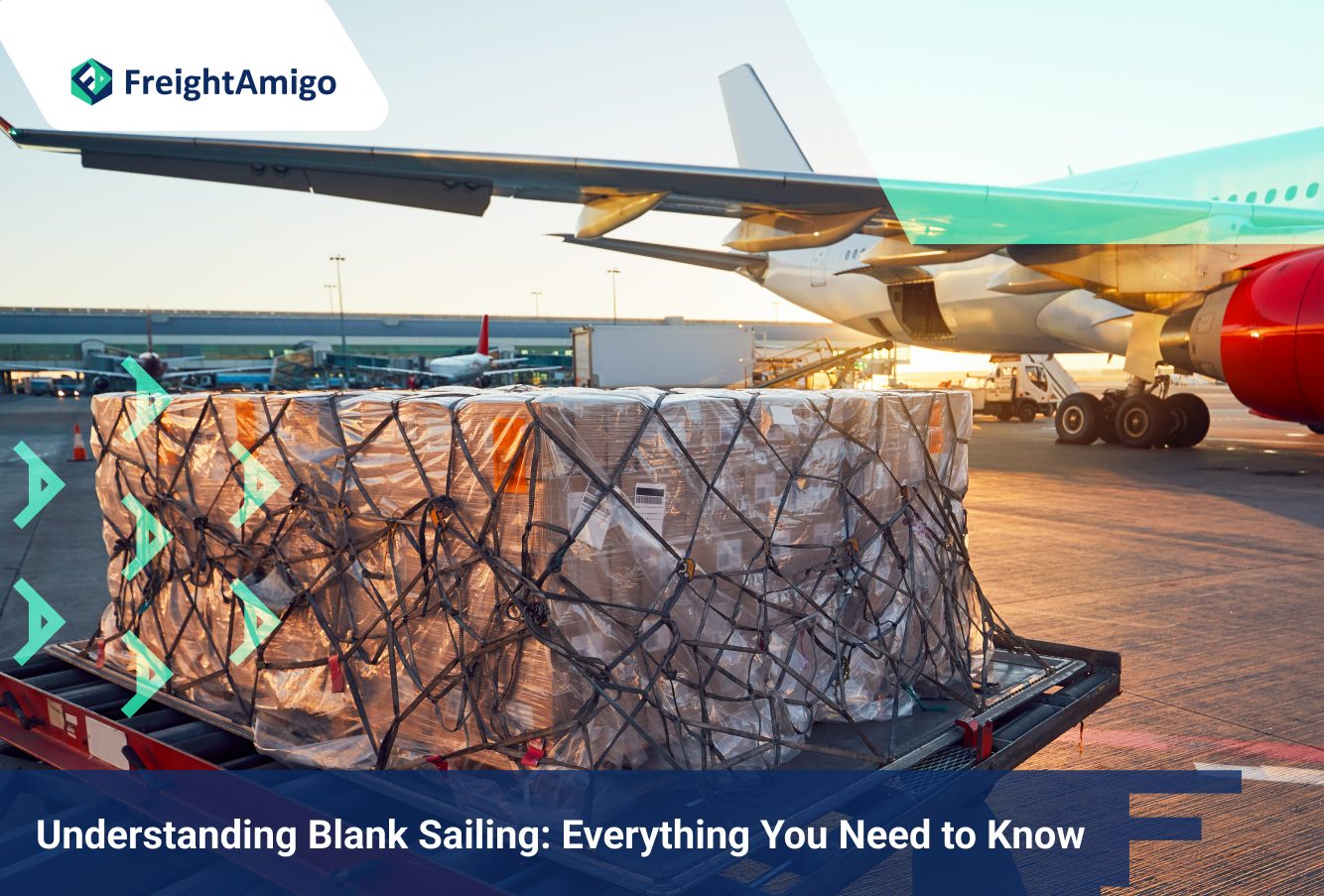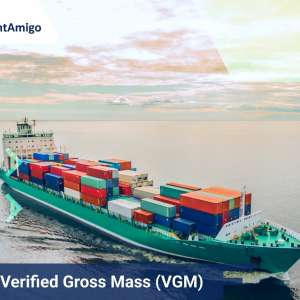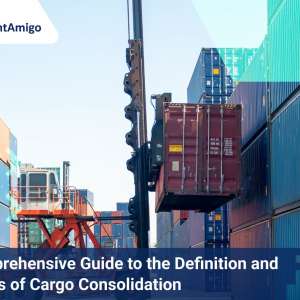Understanding Blank Sailing: Everything You Need to Know
Latest update on 25 March, 2024 by Aiden Ng– Marketing Analyst at FreightAmigo
If you’re new to the shipping industry or just curious about this term, you’ve come to the right place. FreightAmigo provides this article to help you understand blank sailing. In this article we’ll explain what blank sailing is, discuss the reasons behind it, explore its different types, highlight the advantages and disadvantages and provide helpful strategies for both shippers and carriers.
Want to compare the best Express, Air Freight, Sea Freight, Rail Freight & Trucking rates so as to have better control on cost?
What is Blank Sailing?
Blank sailing, also known as void sailing or cancelled sailing, occurs when a scheduled voyage is cancelled by a shipping line. This means that a ship scheduled to carry goods from one port to another will not make the voyage at the scheduled time. Instead, it sits idle or is diverted to another route. Blank sailing is a common occurrence in the shipping industry and is influenced by a number of factors including market demand, operational efficiency and general economic conditions.
Reasons for blank sailing
There are several reasons why empty sailing occurs. One of the main causes is an imbalance between supply and demand. Shipping lines carefully plan their routes based on expected cargo volumes. However, unforeseen circumstances such as a drop in demand or an unexpected increase in supply can upset this balance. To avoid sailing with partially empty vessels, shipping lines opt for empty sailing to save costs and ensure operational efficiency. In addition, external factors such as labour strikes, natural disasters or geopolitical issues can also lead to empty sailing as ships are unable to operate in such conditions.
Types of Blank Sailing
Blank sailing can be divided into two main types: planned and unplanned blank sailing. Planned blank sailing refers to a pre-determined cancellation of a voyage due to anticipated low demand or operational optimisation. Shipping lines often publish their schedules well in advance and, if they anticipate a shortage of cargo, they may decide to cancel a particular voyage. On the other hand, unplanned empty sailing occurs as a result of unforeseen events such as equipment breakdowns, port congestion or even a sudden change in market conditions. Unplanned empty sailing is more disruptive as it is not pre-planned and can create logistical challenges for both shippers and carriers.
Pros and Cons of Blank Sailing
Blank sailing has both advantages and disadvantages for the shipping industry. On the positive side, it helps shipping lines to optimise their operations by reducing the costs associated with sailing partially empty vessels. By cancelling a voyage, companies can consolidate cargo from several voyages into one, maximising the utilisation of their vessels. This improves efficiency, reduces fuel consumption and ultimately benefits the environment. However, cancelling a voyage can have negative consequences for shippers, especially those with time-sensitive cargo. It can disrupt their supply chains, cause delays and affect their overall business operations. Shippers may have to find alternative shipping options or incur additional costs due to the cancellation of a scheduled voyage.
How to deal with blank sailing as a shipper
If you’re a shipper faced with the challenge of blank sailing, there are several strategies you can employ to minimise its impact on your business. Firstly, it’s vital to maintain open communication with your shipping line or freight forwarder. By keeping abreast of their schedules, you can anticipate potential empty sailings and plan accordingly. Building strong relationships with multiple carriers can also be beneficial, as it increases your chances of finding alternative transport options in the event of a shortfall. In addition, diversifying your supply chain and exploring different modes of transport, such as air or rail, can provide you with alternative routes to mitigate the effects of blank sailing.
Strategies for managing blank sailing as a carrier
For carriers, managing empty sailing requires careful planning and proactive measures. One strategy is to implement dynamic pricing based on market demand. By monitoring supply and demand patterns, carriers can adjust their pricing to incentivise shippers to fill their vessels. This helps reduce the likelihood of empty voyages while maximising revenue. Another approach is to work with other carriers through strategic alliances or partnerships. By sharing resources and coordinating schedules, carriers can consolidate cargo and reduce the need for empty sailing. Finally, investing in predictive analytics and forecasting tools can help carriers anticipate market trends and adjust their operations accordingly, minimising the risk of empty sailing.
Future Trends and Predictions for Blank Sailing
As the shipping industry continues to evolve, it’s important to look to the future of Blank Sailing. One trend we can expect to see is the increased use of technology and data analytics to optimise operations. Advances in artificial intelligence and machine learning will provide shipping lines and carriers with better tools to forecast demand, manage capacity and reduce the occurrence of blank sailing. We may also see a shift towards more flexible shipping solutions, such as just-in-time logistics and agile supply chains. These approaches can minimise the need for empty sailing by ensuring that cargo is transported closer to actual demand, reducing the risk of overcapacity.
Conclusion: The importance of understanding blank sailing
Before we dock at the end of our journey, it’s important to emphasise the importance of understanding blank sailing in the shipping industry. Blank sailing is not just an inconvenience, but a complex phenomenon influenced by a number of factors. By familiarising ourselves with its causes, types and implications, we can make informed decisions and develop effective strategies to overcome the challenges it presents. Whether you’re a shipper or a carrier, keeping your finger on the pulse of the industry and adapting to evolving trends will be critical to effectively managing empty sailing. So as we disembark, remember to stay informed, stay agile and stay afloat in the ever-changing seas of the shipping world. To better deal with blank sailing, it is best to have the full support of logistics experts! FreightAmigo can help you choose the best solutions!
Every shipper can face the challenge of empty sailing. It is best to have the full support of logistics experts! To find out more about Blank Sailing, please visit the FreightAmigo enquiry page.
If you have any inquiries on logistics/supply chain, feel free to contact FreightAmigo now:
Chat with us online | Hotline: +852 28121686 | WhatsApp: +852 27467829



